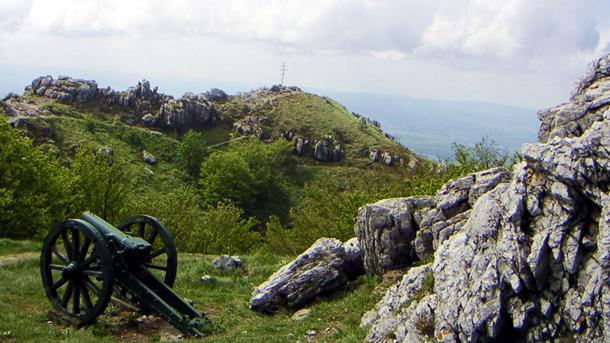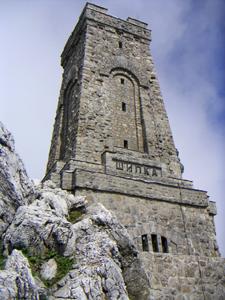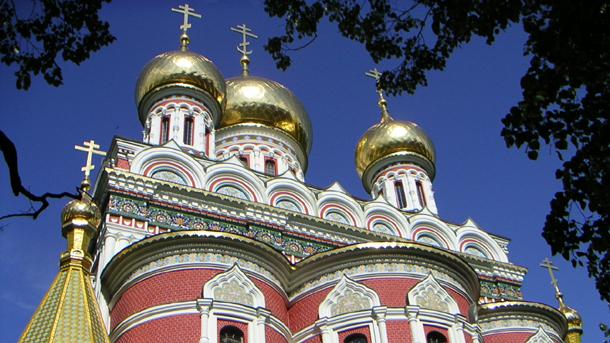One of the key battles in the Russo-Turkish War of 1877-1878 was the defense of the Shipka pass. The most dramatic of those took place from the 21st to the 26th of August (or from the 9th to the 14th of August old style) 132 years ago. The Turks led by Suleiman pasha advanced with a huge army from the south. The defenders of the pass, who were Bulgarian volunteers and Russian soldiers, were faced with heavy odds. The decisive battle began on the morning of the 23rd of August. The defenders valiantly repelled the waves of Turkish attackers; however, some of their lines were broken. In the afternoon, Bulgarians and Russians were weakened and they started to run short of supplies. Then, something unbelievable happened. The enemy was bombarded with the bodies of their fallen comrades. The battle was nearly lost; however, as death seemed inevitable, a Russian detachment came to the rescue. Although not large in number, the reinforcement caused panic among the enemy. Bulgarians and Russians counterattacked and Shipka pass was secured. The Turkish attacks in the next three days came to no avail.

Let’s now dwell on the importance of the Shipka pass battles for the outcome of the Russo-Turkish War. With the sunrise over Shipka on the 23rd of August 1877 the first rays of our freedom shone out because that day turned decisive not only for the Shipka pass battle itself, but also for the entire War of Liberation. It’s appropriate to mention that our volunteer corps was the primary defense force. The Bulgarian volunteers were six thousand, whereas the Russian soldiers were only three thousand. Tactics was the main factor which decided the completion of their mission. With Suleiman’s defeat, the Turkish government’s plans for his forces to pass through the Shipka pass, break the Russian siege of the Pleven-based garrison and drive the Russian army beyond the River Danube, failed.
As to the ratio of the clashing forces, different sources cite different numbers. On the 21st of August, the volunteer corps ran to six thousand, and the Russians were two thousand. On the 23rd, the defenders’ forces were bolstered with one thousand Russians. These nine thousand volunteers and soldiers from the Bryanski and Orlovski regiments were fighting the thirty-seven-thousand army of Suleiman, so the odds were definitely against us. The Turkish were superior also in terms of armaments and artillery. On the other hand, these now sacred to Bulgaria heights were very well defended. For the first time, a full-scale field defense was unfolded. It ran deep covering up to 2000 m at the most; also, there was crossfire set up at the avenues of approach, etc.
If we have to assess whose merit it was, it was the Russians. There were some Russian officers in the Bulgarian volunteer corps, and even though the majority were Bulgarian, they had all served for several years in the Russian army. In fact, the corps was commanded by elite Russian officers, masters of the art of war. The positioning of the troops and the brilliantly organized defense is their merit. In this war, from which Russia emerged victorious, its elite army alone, the Guards and the Grenadiers, numbered 554 000. Therefore, any mistakes or weaknesses in preparation are out of the question. There are civil historians that comment on the art of war without possessing any actual knowledge. They state that our reconnaissance was weak. This is not true. Before the first battle, the Russian command already knew the position of every Turkish regiment and artillery unit.
We should mention that this is to a great extent the merit of two heroic Bulgarians, Hristo and Evlogi Georgiev. They are best known for their donation of land and money for the construction of the Sofia University. We admire them for this donation, but most of us are unaware that the two brothers also gave millions for the creation of a brilliant reconnaissance network, set in motion by Bulgarian-born General Kiselski of the Russian army. Bulgarian and Russian spies collaborated in the course of the reconnaissance. On the other hand, this war marked a whole new stage in martial art as innovative weaponry was used. Highly trained officers took part in it, for example Prof. General Dragomirov, commander of the Fourteenth Infantry Division. For the 85-year existence of the Russian Staff College, only two gold medals have been given away, one of them to General Dragomirov. The battle strategy was developed by Prof. General Obrutchev, and the commander of the volunteer corps, General Stoletov, was a Mathematics Doctor.
There are exhibits in the Museum of Military History connected with the Shipka epopee – for instance the classic painting “The Heroic Defense of Shipka, August 1877” by Russian painter Pavel Kovalevski, as well as other paintings. There is an album from the 1950s with reproductions of 50 paintings of the Russo-Turkish war, mainly by Russian painters. From this war there is a large number of artifacts: weapons, uniforms, icons, personal belongings, and others.
Soon after the end of the Russo-Turkish War in 1878 a special committee was founded to make sure that the memory of their glorious sacrifice was handed down the generations. In no time at all a total of 26 memorial signs and sculptures had been placed in the locality. The big monument on mount Shipka was built in 1934 with charity donations by the Bulgarian people with the concept to embody the everlasting human strife for freedom and independence. It was unveild on August 26, 1934.


Vasil Levski is a Bulgarian revolutionary and national hero who fought for the Liberation of Bulgaria from the Ottoman Empire. He is an ideologist, founder and organizer of the Internal Revolutionary Organization, for which grateful..
Bulgarian Patriarch Daniil will celebrate the first liturgy in London for the consecration of the new church of the Bulgarian Orthodox community in the British capital - the church of Saint Ivan Rilski. T he church is part of the Bulgarian Embassy..
Every year on February 10, the feast of St. Haralambos , Bishop of Magnesia, is celebrated with special solemnity in a small Bulgarian town in the northernmost part of the country's Black Sea coast . For Shabla and its residents, this is the..
Vasil Levski is a Bulgarian revolutionary and national hero who fought for the Liberation of Bulgaria from the Ottoman Empire. He is an..

+359 2 9336 661
